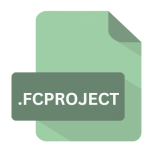.DMX File Extension

Source Filmmaker Project
| Developer | Valve |
| Popularity | |
| Category | Video Files |
| Format | .DMX |
| Cross Platform | Update Soon |
What is an DMX file?
The .DMX file extension is associated with Source Filmmaker (SFM), a powerful animation and filmmaking tool developed by Valve Corporation.
This software is widely used in the gaming and animation industry for creating cinematic content and in-game animations, particularly for games developed using the Source engine, such as “Half-Life 2” and “Team Fortress 2.”
The .DMX files are pivotal in SFM projects as they store data related to animation, models, and various project assets.
Understanding the .DMX file extension involves exploring its origins, structure, usage, and how to manage these files effectively.
More Information.
Valve Corporation, known for its groundbreaking games and tools, developed the Source Filmmaker in the early 2010s to offer a robust platform for creating animations using the Source engine’s assets.
The .DMX file format was designed to handle complex animation data and models within this environment.
Initially, the purpose was to provide a seamless way for users to integrate animations with Source engine models, allowing for more creative freedom and detailed cinematic production.
Over time, the .DMX file format has evolved with the Source engine’s updates, but its core function remains to store and manage animation data efficiently.
Origin Of This File.
The .DMX file format was introduced by Valve as part of its Source Filmmaker suite. The extension stands for “Data Markup eXchange,” reflecting its role in exchanging detailed animation and model data.
The introduction of .DMX files was a significant step towards enhancing the capability of animators and game developers to produce high-quality, detailed animations and cinematic sequences.
File Structure Technical Specification.
The .DMX file format is a binary file structure that contains various types of data crucial for Source Filmmaker projects. Its primary components include:
- Animation Data: This section stores keyframes, motion paths, and other animation-specific information. It defines how objects and characters move and interact within the scene.
- Model Data: Contains information about 3D models, including vertices, textures, and materials used in the animation. This section ensures that the models are rendered correctly within the Source engine.
- Scene Data: Stores information about the scene setup, including lighting, camera angles, and environmental effects.
The .DMX files are typically complex and structured in a way that allows for high levels of detail and customization. They are not easily readable by standard text editors due to their binary nature.
How to Convert the File?
Converting .DMX files to other formats can be challenging due to their specialized nature. There are a few approaches:
- Source Filmmaker Tools: Within Source Filmmaker, you can export animations and models to formats such as .FBX or .OBJ. This involves using the built-in export functions to convert the content for use in other applications.
- Third-Party Software: Some third-party tools and converters are available that can handle .DMX files. These tools may offer conversion to common formats, though compatibility and functionality can vary.
- Manual Extraction: Advanced users might extract data from .DMX files manually and reformat it into other file types. This method requires a good understanding of the file structure and may involve scripting or programming.
Advantages And Disadvantages.
Advantages:
- High Detail: The .DMX format supports detailed and complex animation data, making it ideal for creating high-quality animations and cinematics.
- Integration with Source Engine: As the native format for Source Filmmaker, .DMX files integrate seamlessly with Source engine assets, streamlining the animation workflow.
- Flexibility: Provides a high level of flexibility in animation and scene setup, allowing animators to create intricate and dynamic scenes.
Disadvantages:
- Complexity: The binary structure of .DMX files can make them difficult to edit or troubleshoot without specialized tools.
- Compatibility: The format is primarily useful within the Source Filmmaker environment and may not be compatible with other animation or modeling tools.
- File Size: Detailed animations and models can result in large .DMX files, which may be cumbersome to handle or share.
How to Open DMX?
Open In Windows
- Source Filmmaker: The primary and most straightforward way to open .DMX files is through Source Filmmaker itself. Simply open the software, and load the .DMX file within the project.
- Hex Editors: For those who need to inspect or debug the file’s contents, hex editors can be used to view the binary data. However, editing directly in a hex editor is not recommended unless you are familiar with the file structure.
Open In Linux
- Wine: You can use Wine to run Source Filmmaker on Linux, allowing you to open and work with .DMX files.
- Hex Editors: Linux users can also use hex editors to inspect .DMX files, though practical manipulation of the file contents is limited.
Open In MAC
- Source Filmmaker via Boot Camp or Virtual Machine: Source Filmmaker is not natively available for macOS, but you can run it through Boot Camp or a virtual machine with Windows installed.
- Hex Editors: Similar to Windows, hex editors can be used to view the binary content of .DMX files, but practical usage is limited.












